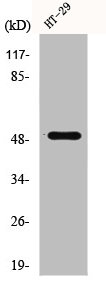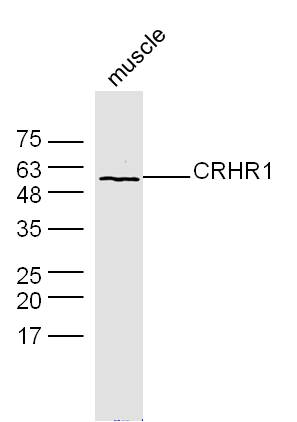
IHC analysis of dendrite of a neuronal cell in C57 mouse cortex using GTX88961 CRHR1 (aa 107 - 117) antibody, Internal. Green : Primary antibody Blue : DAPI Dilution : 0.3microg/ml
CRHR1 (aa 107 - 117) antibody, Internal
GTX88961
ApplicationsImmunoFluorescence, Western Blot, ImmunoCytoChemistry, ImmunoHistoChemistry
Product group Antibodies
TargetCRHR1
Overview
- SupplierGeneTex
- Product NameCRHR1 (aa 107 - 117) antibody, Internal
- Delivery Days Customer9
- Application Supplier NoteWB: 0.1-0.3microg/ml. *Optimal dilutions/concentrations should be determined by the researcher.Not tested in other applications.
- ApplicationsImmunoFluorescence, Western Blot, ImmunoCytoChemistry, ImmunoHistoChemistry
- CertificationResearch Use Only
- ClonalityPolyclonal
- Concentration0.50 mg/ml
- ConjugateUnconjugated
- Gene ID1394
- Target nameCRHR1
- Target descriptioncorticotropin releasing hormone receptor 1
- Target synonymsCRF-R, CRF-R-1, CRF-R1, CRF1, CRFR-1, CRFR1, CRH-R-1, CRH-R1, CRHR, CRHR1L, corticotropin-releasing factor receptor 1, corticotropin-releasing factor type 1 receptor, seven transmembrane helix receptor
- HostGoat
- IsotypeIgG
- Protein IDP34998
- Protein NameCorticotropin-releasing factor receptor 1
- Scientific DescriptionThis gene encodes a G-protein coupled receptor that binds neuropeptides of the corticotropin releasing hormone family that are major regulators of the hypothalamic-pituitary-adrenal pathway. The encoded protein is essential for the activation of signal transduction pathways that regulate diverse physiological processes including stress, reproduction, immune response and obesity. Alternative splicing results in multiple transcript variants. Naturally-occurring readthrough transcription between this gene and upstream GeneID:147081 results in transcripts that encode isoforms that share similarity with the products of this gene. [provided by RefSeq, Aug 2016]
- Storage Instruction-20°C or -80°C,2°C to 8°C
- UNSPSC12352203
References
- Hiramoto K, Yamate Y, Sato EF. The Effects of Ultraviolet Eye Irradiation on Dextran Sodium Sulfate-Induced Ulcerative Colitis in Mice. Photochem Photobiol. 2016,92(5):728-34. doi: 10.1111/php.12620Read this paper
- Kimura A, Kanazawa N, Li HJ, et al. Influence of trichloroacetic acid peeling on the skin stress response system. J Dermatol. 2011,38(8):740-7. doi: 10.1111/j.1346-8138.2010.01091.xRead this paper








